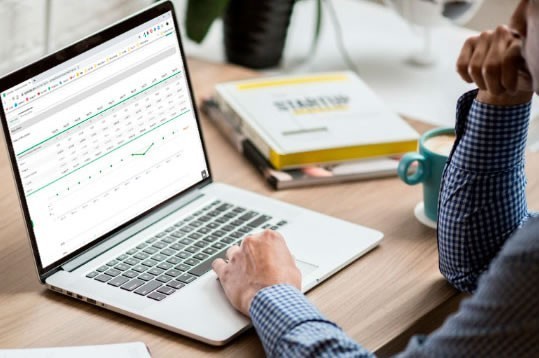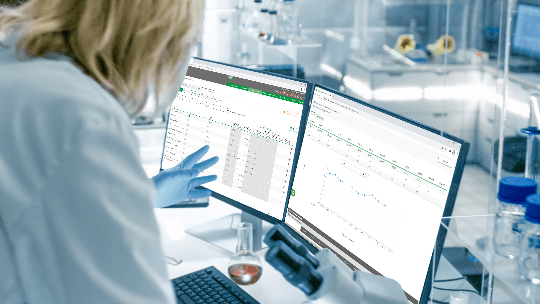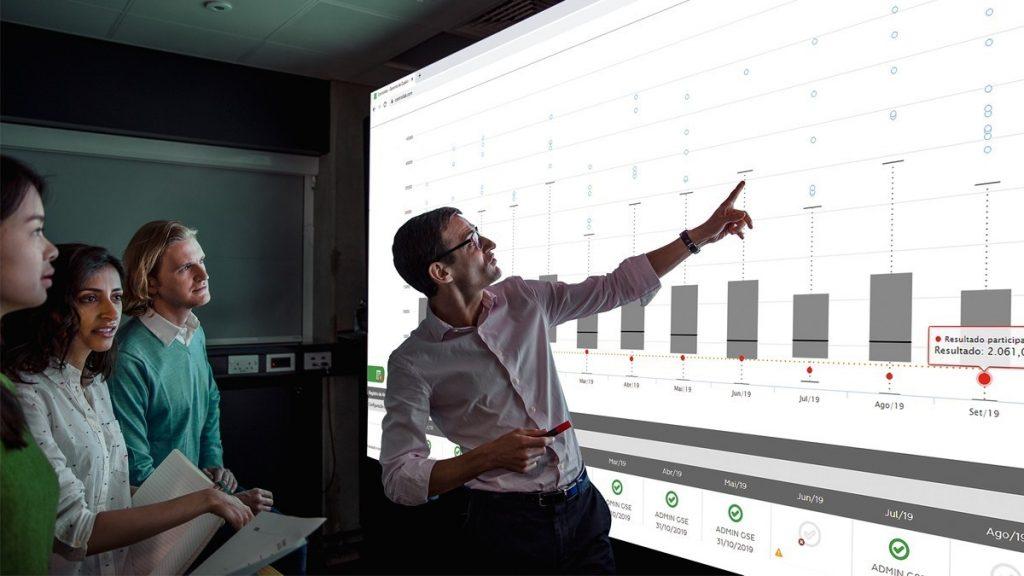+350
17

In the laboratory indicators module, we have the endorsment of SBPC/ML – Brazilian Society of Clinical Pathology/Laboratory Medicine, Controllab partner since 1977.
Promotes information for more assertive decisions. The platform improves processes, enhances performance, identifies new opportunities and keeps the organization sustainable.
The information generated by the program encourages decision makers to gain a broader view of the results achieved for the process improvement and laboratory sustainability.

With Metricare, the laboratory identifies whether the efforts and strategies applied in the processes are competitive with their equals, based on hard evidence. This evidence helps to reduce costs, increase efficiency and productivity.
This is because the program uses benchmarked indicators to measure and compare laboratory performance against market performance.
The indicators contemplated in the laboratory module are correlated in all areas, providing a global and systemic view of the process.
A multidisciplinary team (including statistics) reviews data reported in the program of Metricare, that acts as a third party company, imparting impartiality and confidentiality to reported data.
Metricare follows a code of ethical conduct & compliance integrated with national and international laws for general data protection. The platform has a detailed manual and description for the reliability and standardization of information.
There are more than 150 indicators available for the laboratory.
To simplify data collection and improve access to information, partner companies integrate the LISto the Metricare, promovendo mais agilidade nos processos e confiabilidade nas informações disponibilizadas em tempo real para a tomada de decisão.

Traceability in Metricare favors transparency for accreditations such as ISO 15189, CAP, PALC, DICQ and others, which require the demonstration of objective evidence that supports and assists the planning, monitoring and evaluation of process performance.
In the platform, the laboratory has a chance to compare with its equals and see if the actions taken over time are significant in relation to the market.

By participating, the laboratory improves the monitoring of indicators and there is greater effectiveness in management, increasing the level of safety for managers, health professionals and patients.
SBPC/ML e Controllab, are collaborating entities in the QUALISS – Qualification Program of Health Service Providers ofANS – National Agency of Supplementary Health.
Broad and comprehensive
indicator scope
Internationally harmonized indicators aligned with IFCC
Goal setting to achieve determined goals
Advisory group of experts involved in monitoring the program
Comparison between networks
(support or brands)
Integration with LIS providers to simplify data collection
Some numbers prove the heterogeneity between laboratories, contributing to a robust benchmarking program.
+350
17

n times of crisis management, such as the one caused by the Covid-19 pandemic, Metricare becomes an ally to managers.
In order to maintain reliable processes, avoid impacts on the quality of the results and protect the reputation of the institutions, the data obtained in the PBIL were fundamental to guide the managers’ decision.
Having the measurement and knowledge of the weaknesses and strengths of the laboratory, were determining factors for agile decisions, amid scenarios of uncertainty.

Monthly, laboratories receive benchmarking from data reported or obtained directly from the Laboratory Information System (LIS). Upon registration, the laboratory receives a password to access Metricare.
El laboratorio llena las informaciones que irán a establecer su perfil de comparación (informaciones como cantidad de exámenes, público atendido, naturaleza del laboratorio y otras que ayudan a compararlo con otras organizaciones con características semejantes).
El equipo estadístico de Controllab utiliza las informaciones del perfil del laboratorio para recomendar cual sería el grupo de comparación ideal relacionado a sus características. Los laboratorios son comparados entre sus semejantes.
El reporte de los datos es continuo y disponible para su acceso inmediato a la obtención de la información. Pueden ser enviados manualmente o vía integración/interfaz con el LIS (Laboratory Information System) – Sistema de Información del laboratorio.
Cuando los datos son enviados vía integración/interfaz, el programa recoge automáticamente los datos del laboratorio y las transmite directamente las informaciones del LIS al sistema de Metricare.
La integración promueve más practicidad en la rutina, reduciendo la complejidad de la recogida de los datos y mejora el acceso a las informaciones. Promueve más agilidad en los procesos y confiabilidad en los datos. Permite el acceso en tiempo real de las informaciones para la toma de decisión.
Mensualmente el laboratorio visualiza en tiempo real la comparación mercadológica de sus resultados para así definir acciones primordiales a las estrategias de la organización.
El posicionamiento del laboratorio en el mercado es señalizado en el gráfico Box plot. El Box plot es adoptado para la representación gráfica de los datos por permitir una excelente visualización de la dispersión, de la simetría, de las barreras de outliers y de los outliers, independiente de la forma de distribución de los datos. El Box plot está constituido con base a la mediana y en los cuartiles, lo que reduce el impacto de los outliers y permite un excelente análisis exploratorio.
Vea como interpretar el resultado en el gráfico Box plot.
La posición relativa (Ranking) entre pares y la Métrica Sigma son aplicados en los resultados, cuando sean pertinentes, para estimular la mejoría continua de los procesos de laboratorios.
Resultados en Métrica Sigma: indica la calidad de los procesos
Ranking: En 1º lugar están los mejores resultados y en el 5º lugar están los resultados más sensibles
LIS developers integrate laboratory systems with Metricare to reduce data collection complexity and improve access to information, promoting faster process processes and reliability of real-time decision-making information.
it lets you focus on benchmarking results analysis
data
reliability
reduce data collection failures
time in raw data monitoring
Some developer companies, in addition to integrating LIS, promote the indicators in their systems to contribute to laboratory sustainability.

Silvia Yano Gerente de Marketing - Matrix.
E Indicador Esencial